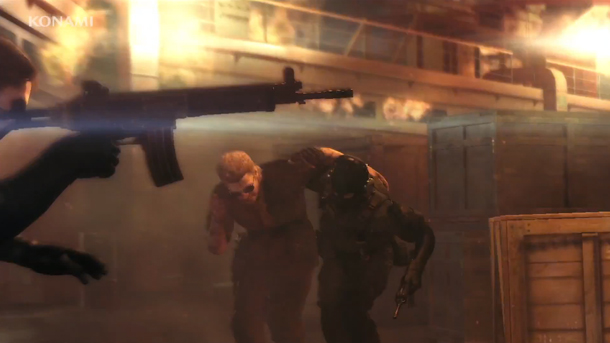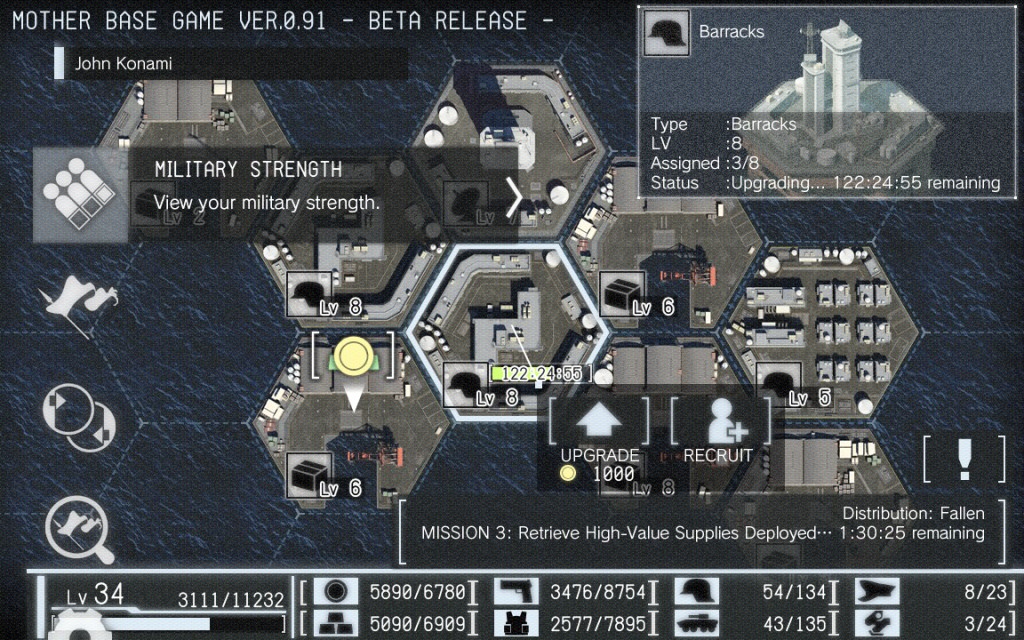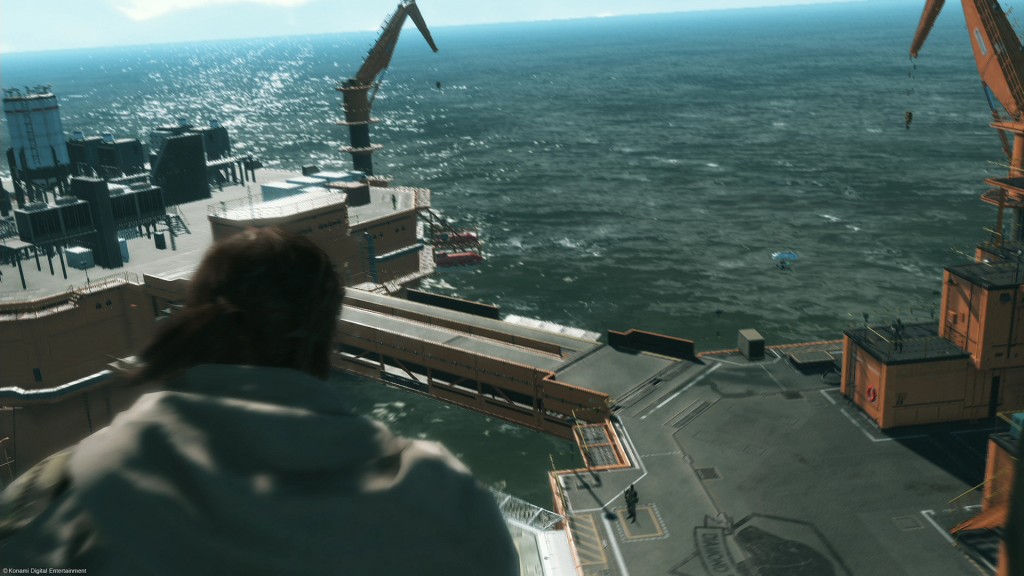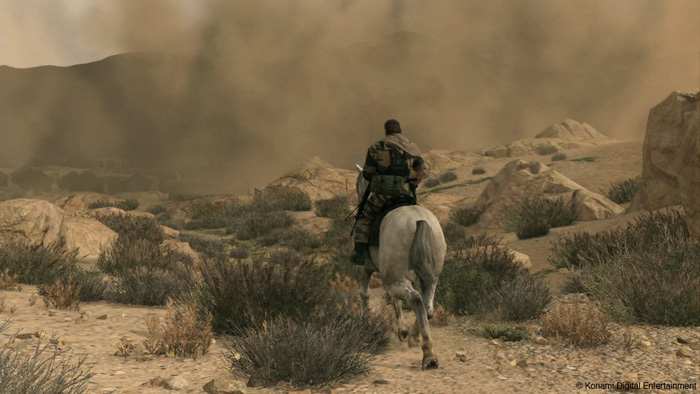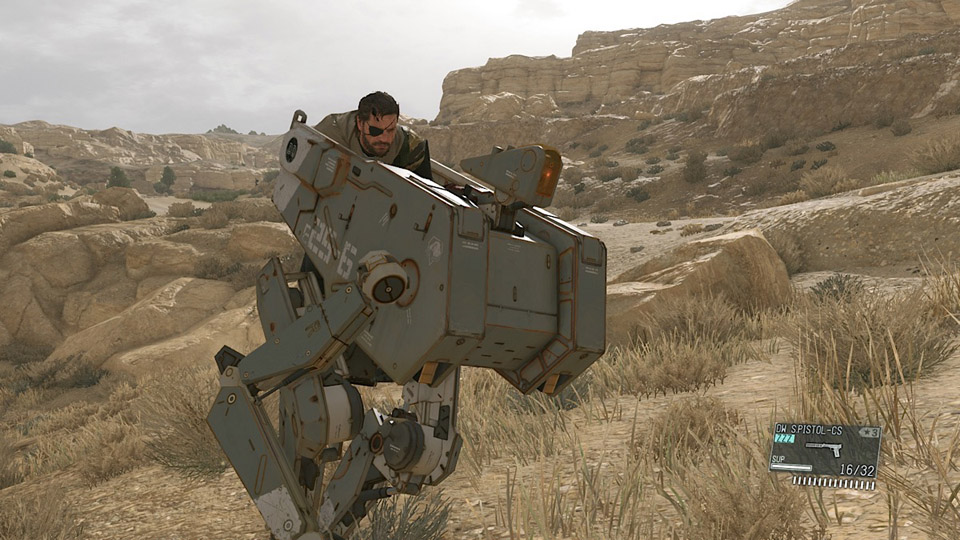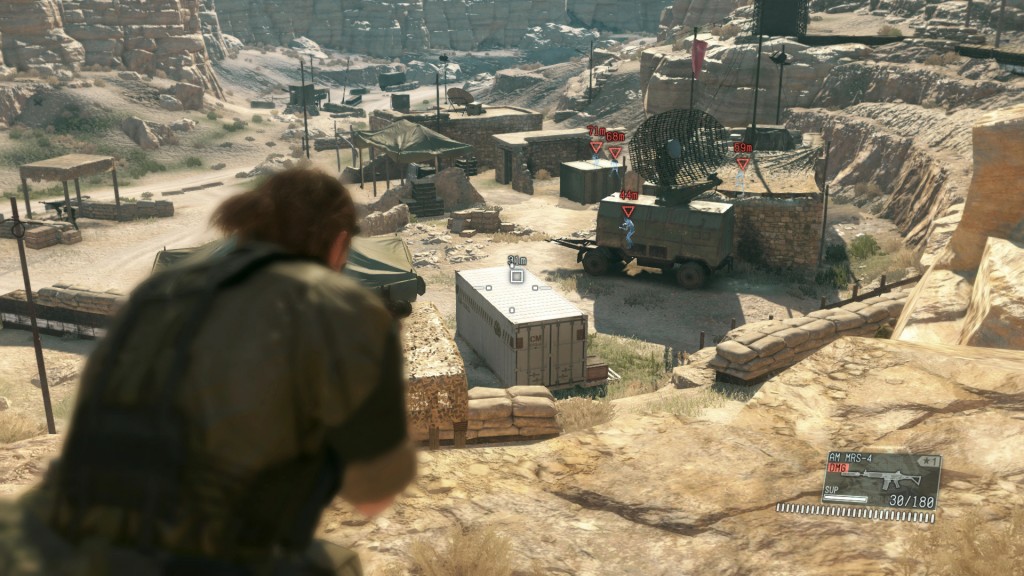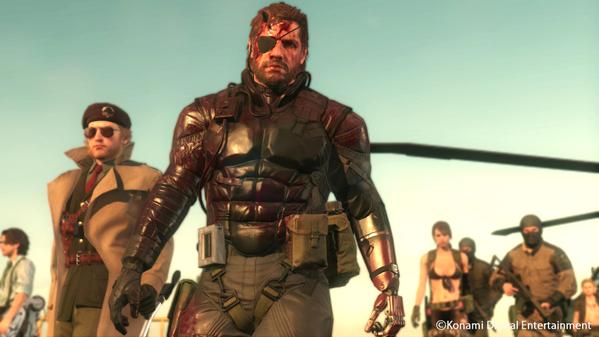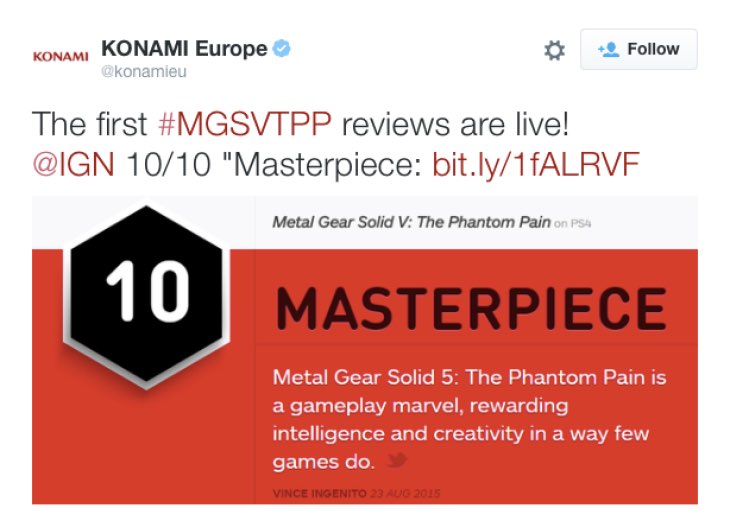When the embargo for reviews for Metal Gear Solid V: The Phantom Pain were lowered I waited anxiously for the reviews to be posted. I was nervous that the game I had been looking forward to since 2008 and openly since 2012 was as good as I had hoped it could be. The first review for the game I saw was a 10/10 from Vince Ingenito from IGN. I thought this was odd since this was Vince’s first 10/10 game. Then like a waterfall the accolades and perfect reviews began to be posted in an abundant amount (Currently the game sits at a Metacritic Score of 96/100. This is an average of ALL REVIEWS by MAJOR OUTLETS!). The week that lead up to the games’ official release seemed like it would last forever. Finally after playing the game for an undisclosed but ludicrous amount of hours all I have to say is that this game is nearly perfect. I left some quotes from notable reviews below.
“The Phantom Pain may be a contender for one of the best action games ever made, but is undoubtedly the best Metal Gear game there is. 10/10”- Gamespot
“The Phantom Pain is the kind of game I thought would never exist – one where every minute gameplay detail has true purpose. 10/10” – Vince Ingenito – IGN
For those unaware, Metal Gear Solid V: The Phantom Pain is the last game in a TWENTY EIGHT year long blockbuster series (Well atleast the last for the series creator). I highly suggest reading my preview for this game simply because to understand this game and review, you need to know what the heck is going on (you can find it here). I will attempt however to summarize the setting of the game as quickly as possible.
The player controls a character called Venom Snake which is apparently the new alias for Big Boss or Naked Snake. The player awakes from a nine year coma after their Private Military Corporation called MSF (Big Boss’s life’s work is destroyed by an unknown party). The game at its core is an epic about revenge and more specifically vengeance. As Venom Snake the player attempts to recreate the PMC while at the same time eliminating those that destroyed the original. The purpose for the group now called Diamond Dogs is stated simply by its co founder and ally, Kazuhira Miller, “The world calls for wet-work, and we answer! No greater good. No just cause!” The progression of the story in The Phantom Pain is by no means a pleasant one. Instead, the game follows a once proud hero’s fall from grace and honor.
Gameplay in The Phantom Pain at its core can be described as an open world – stealth action game. I could best describe this game as a mixture of Far Cry, GTA, and Splinter Cell.Far Cry because the game features dozens of outpost, bases and fortresses that can be captured in the massive open world. The game takes aspects from GTA merely through the scale of the environments the player with encounter. Finally, The Phantom Pain draws several stealth play styles from the Splinter Cell games. The funny thing is that The Phantom Pain accomplishes all of this and executes it with far more success. In addition to aspects from the previous games stated, The Phantom Pain brings its own characteristics to the table as well. One of the more broad features that the game includes is the base building progression that the player controls.
This can best be described as a professional game developers interpretation of the Clash of Clans genre. In the story of The Phantom Pain, the player as I already stated is attempting to recreate their own PMC after the original’s destruction. Soldiers are recreated to add to your base through a process known as fulton recovery. The player accomplishes this by knocking an enemy soldier out and attaching a balloon like device to their body. After the balloon is attached it inflates and lifts the soldiers up to a safe altitude after which a helicopter snags them out of the air and brings them back to the mother base. After some interrogation and in some cases just a quick chit chat the prisoner will realize that working for your PMC is literally a soldier’s dream. No bureaucracy holding you back, no politics, just brotherhood and comradeship. This is only the first step to your recreation of your mother base. Recruited soldiers can be sent to several different sub teams on your base. These include your Research & Development Team, Combat Team, Intel Team and several more teams that will level up over time and allow the player to manufacture and use better weapons and equipment in the field. Some teams such as the Combat Team can even help you in the field or you can have them run operations on there own in order to increase your GMP. GMP is the currency used to research and manufacture things in the game.
Now onto the Player versus Player aspect of the game. As the player you can raid other real player’s own mother bases. This is where the Clash of Clans aspect really sheds light. As a player you can personal sneak around another player’s base as Big Boss. You can even steal their assets such as soldiers, cargo, tanks, helicopters, mounted gun emplacements, etc. Yet, at the same time this isn’t an easy task. As stated the other player’s have plenty of assets to defend their own turf. When creating your base and constructing new struts for the base the player also is given the opportunity to add defense to their base. These included machine guns, guard rotations, drones, helicopters and pretty much anything else that could be expected for an action game of this genre. These assets can also be procured in offline play in the game’s story mode as well. In other words if you see a tank in the campaign, don’t blow it up. Rather, disable it and attach a fulton device to it and ship it back to your base. All of these assets will create a more difficult defense which will in turn keep other players out. This feature of base building alone could be a game, yet this is only a fraction of the gameplay and to be honest you can beat the entire game without having to invade another players mother base.
The main minute to minute gameplay revolves around a dynamic story that takes players to places such as the Soviet Invasion of Afghanistan in 1984 to the war torn region of Angola in Africa. All regions are open world and they both have real time passage of time and “dynamic weather”. For example, as Big Boss I may be attempting to sneak into a Soviet outpost, instead of waiting for night (when guard rotation occurs and far less guards are on patrol), I could attempt to see if sand storm is predicted to hit the region on this specific day. The sand storm will decrease the guard’s visibility and line of sight that gives the player a better opportunity to infiltrate the base than even at night. Likewise, in Angola, rainstorms and monsoons can create the exact same effect. The playable environments in all regions of the game are littered with outposts, bases, and fortresses.
Roads are patrolled by armored convoys and foot patrols. Traversing these roads and the world in general can be accomplished through several different means. For starters the player can request a horse called D-Horse which can be used to navigate the world with more stealth than a jeep since its more quiet. This however doesn’t mean that you cannot procure a jeep, APC, truck or any motorized vehicle. Other modes of transport include simply being dropped on top of your objective via helicopter. Later on in the game you can even ride a robot that can be equipped with arms and an assortment of guns. Players also need to plan routes to evacuate these open environments because if you alert the security that is guarding these areas the entire region can become on alert. If this occurs the player should either exfil via helicopter or attempt to cross the border. How and where the player does this however for example when it comes to a landing zone for the helicopter is entirely up to the player. Just be sure to knockout nearby anti air defenses that can and will shoot your helicopter down.
Metal Gear Solid V: The Phantom Pain truly respects the intelligence of the player. Most games “hold the players hand” when it comes to gameplay and player choice. The Phantom Pain on the other hand gives the player’s the tools and an objective. How this is completed is entirely up to the player. For example I was tasked with acquiring a Russian translator in a mission early on in the game. I personally decided to attempt a more stealth like approach. I waited patiently for the translator to be alone and proceeded to use my tranquilizer gun to knockout all other surrounding soldiers. This culminated with me knocking out the translator and fultoning his entire fireteam to my mother base. This is only one of many different approaches the player can choose. For example, you could burst into the outpost with an automatic un suppressed assault rifle and kill everyone but the translator. Or you could snipe them all from far away. As you can see there are towns of options when it comes to completing your objective. You could even drive a jeep with C4 attached to it and blow it up in the base if that is your kind of approach. The game also allows the player to replay missions, this allows you to perfect your favorite kind of play style and retrieve resources that can be sent back to your base. I felt the amount of freedom in the game was perfect. The game doesn’t let you go completely off the rails but it still allows you to have your own say in how you complete your objective.
The game also lets the player choose a buddy to take in to battle. Without spoiling some later additions you can take D-Walker, the robot mentioned earlier, D-Dog, a dog you find in Angola, D-Horse (original right), and Quiet who is a mute sniper. Each buddy has a sort of bond/relationship meter that increases the more time you spend with them on the battlefield. Each one has their own pros and cons. Quiet for example is fantastic at scouting ahead and eliminating enemies from afar. However, rain has a negative effect on her “powers” (which I won’t spoil). You can also go into areas lone wolf style if you want to. Yet, I find that bringing a buddy along can be incredibly helpful. In addition to simply picking them you can also decide what kind of gear they will bring. This is a nice final touch to the system especially if you equip Quiet with a tranquilizer rifle.
The Phantom Pain’s story also attempts to touch on more “taboo” aspects that typically aren’t in action games or even games in general. This has led to a lot of controversy especially when it comes to child soldiers and blood diamonds and even the portrayal of Quiet as a character. The scantily clad sniper has reasons as to why she wears the attire that caused so much uproar in the gaming community, but her outfit can be changed by the player if you really are bothered by it that much. Personally, I felt that the game tackled all of the “taboos” and dark and morally gray areas quite well. The game may be funny at times but it can absolutely slow its pacing down and show a more mature side to its moral compass. Players shouldn’t quit this game if they are offended by subject matters. If the game is capable of making such an emotional connection then it should be played more because it is accomplishing its purpose as a medium. If a game doesn’t make the player question their own moral compass it then lacks the ability to be an outstanding game. This stands true for all games when it comes to story, not just The Phantom Pain.
The greater aspect of the story that takes the spotlight away from all of the awful things the player encounters is the transformation of the main playable character Venom Snake. Venom Snake, voiced by Kiefer Sutherland, was previously a national hero. He saves the world from a nuclear exchange twice first in Metal Gear Solid 3 and then again in Metal Gear Solid Peace Walker. However, as seen in the original Metal Gear & Metal Gear 2 Big Boss/Venom Snake is a warlord that ultimately is an awful villain. The Phantom Pain attempts to tackle this transformation. Several INCREDIBLY important twists in this game change the entire history and perspective of the franchise as a whole. I will not spoil them but some things aren’t what they seem and some people are not who as the player you think they are. I could go on about some spoilers that made my mouth drop to the floor but for the convenience of the reader I will leave them out. I felt that the twists near the ending of the game were smart since they actually clear up a couple questions and don’t really leave any lose ends since this is probably the last game in the series. This is because the series creator and mastermind Hideo Kojima was fired along with all of his staff at Kojima Productions in LA by Konami, the game’s publisher. This makes the game as a whole feel bitter sweet. None the less I found the game impossible to enjoy and incredibly hard to put down. There is always something to do, another operation to complete, another item that needs to be researched. I am still not done playing the game. Though I have beaten the story I am still attempting to level all of my base up and research several unique items/weapons.
Verdict: 10/10 Hideo Kojima went out with a bang with this final installation in the franchise. The game runs incredibly well on my PC and the PS4 version (the other version I played) had little to no stuttering. The ambitious open world design delivers what the developers promised. Gameplay is addictive and incredibly hard to put down. Most of all, Metal Gear Solid V: The Phantom Pain stands out from the rest of the games out and coming out due to the fact that it isn’t afraid to cover tough topics along with the fact that it respects the intelligence of the average gamer.
This game truly is a masterpiece, a kind of game that has the depth and wide perspective that truly only comes every couple of years. The limitless possibilities to how you can play The Phantom Pain allow creativity for the player. Do yourself a favor and go buy this game if you haven’t already.

